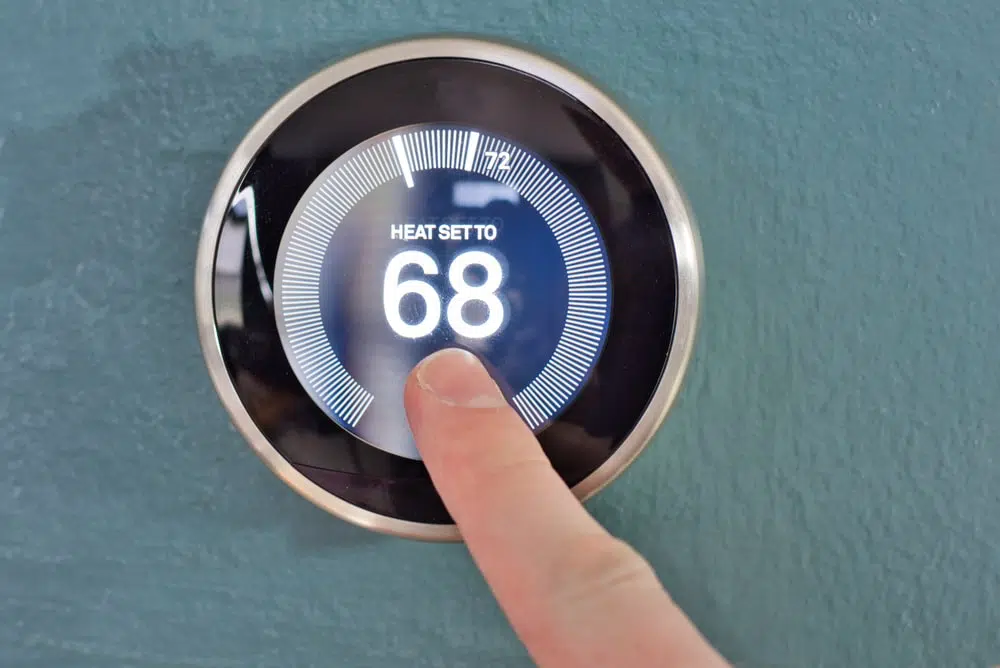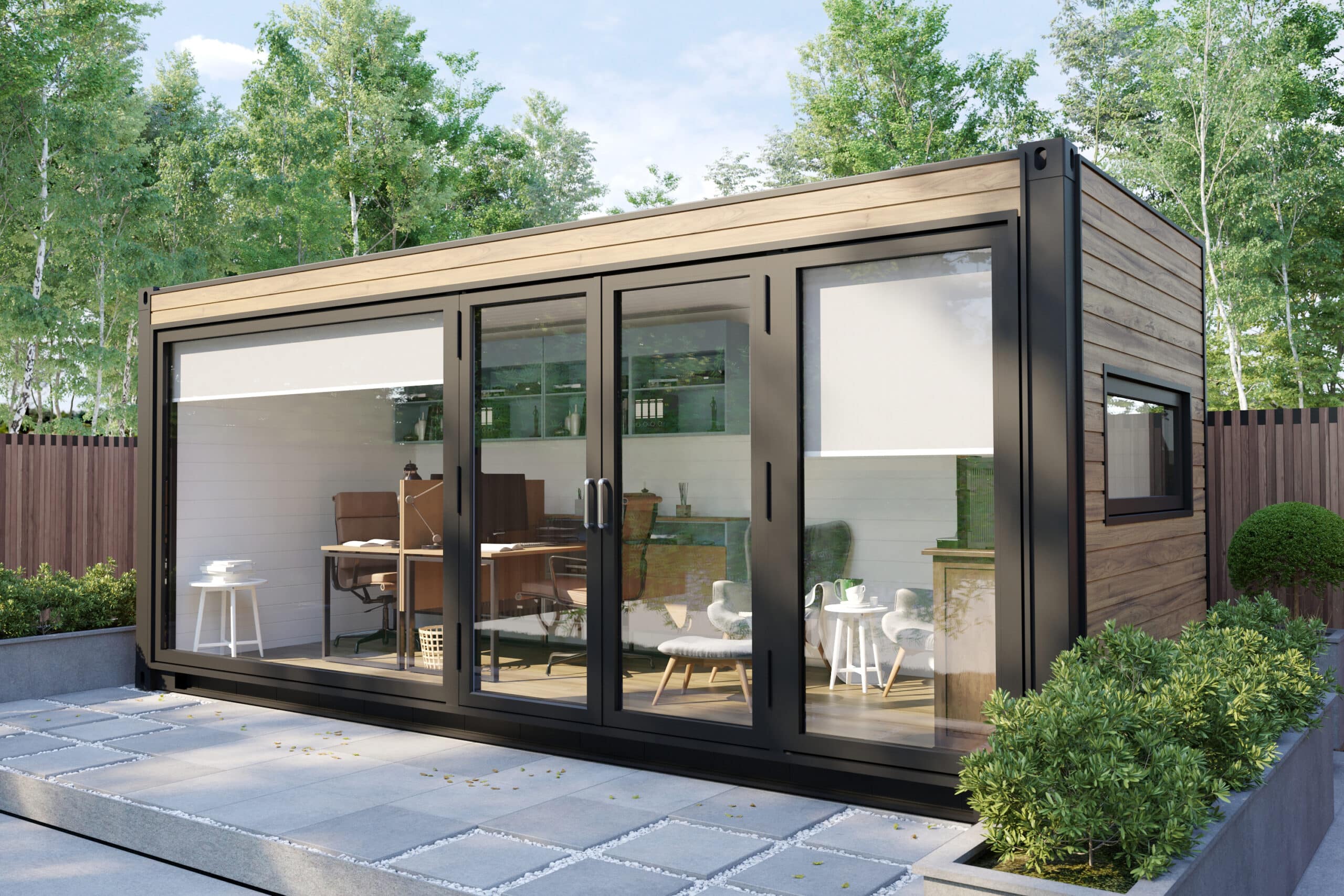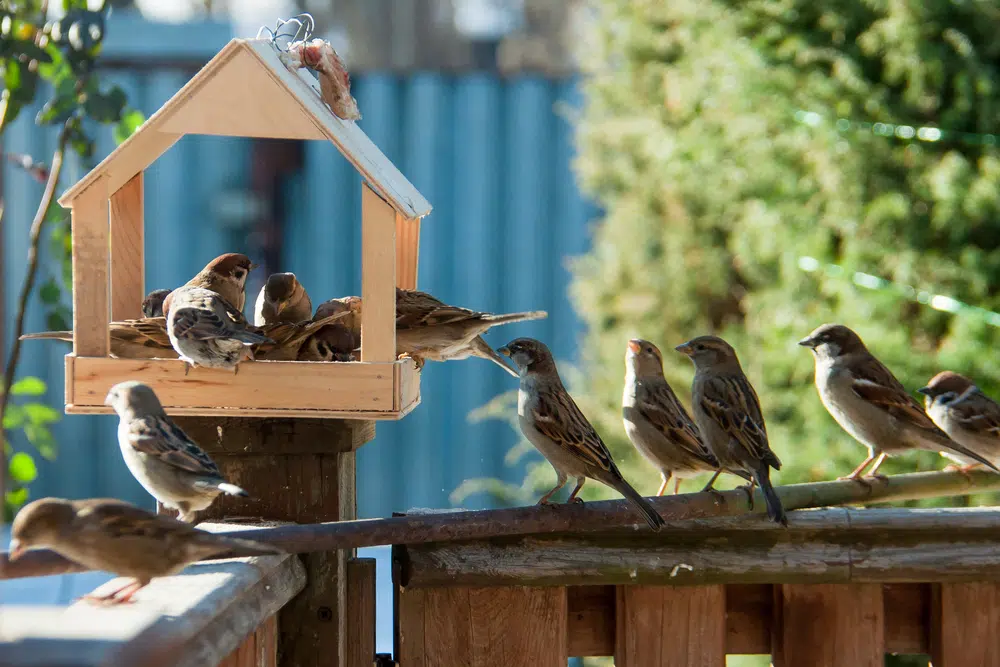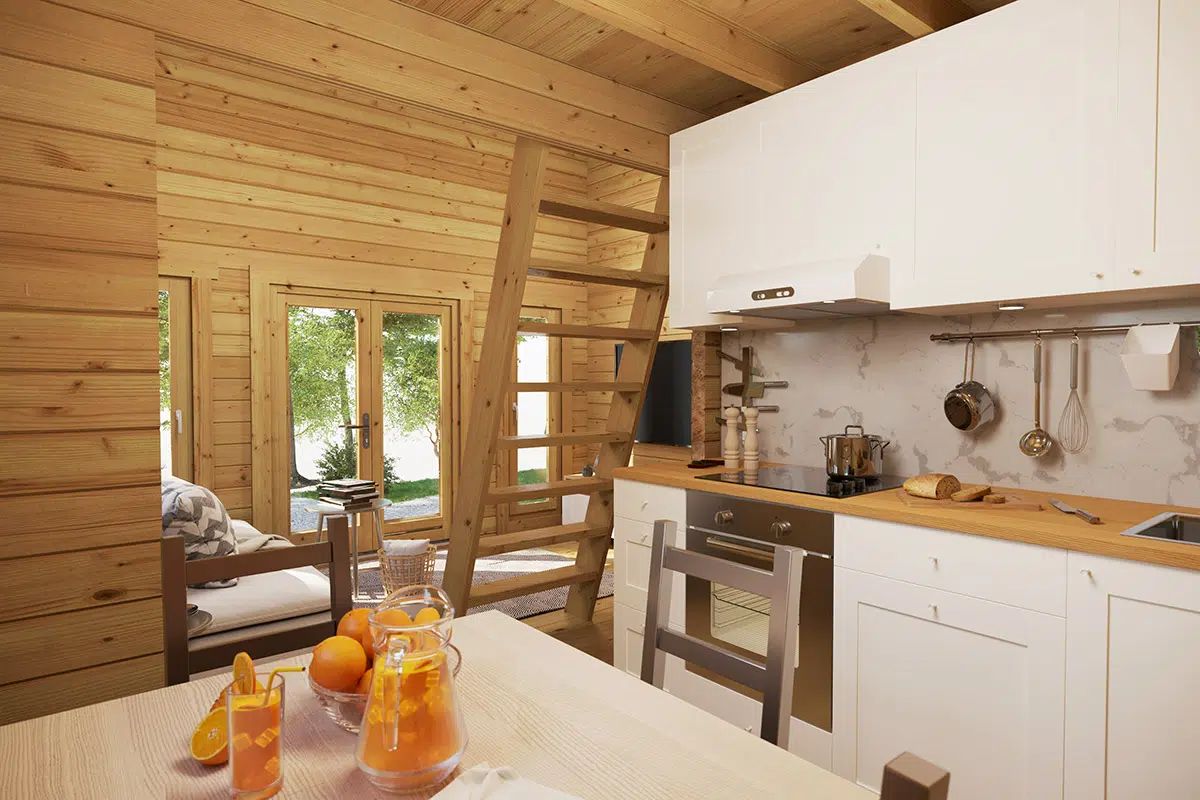Summer House Ventilation: Is It Needed?
14.06.2024
Have you ever wondered if a wooden summer house needs ventilation and why? We’ll cover everything you need to know about how to ventilate a summer house, different types of ventilation options and how they work.
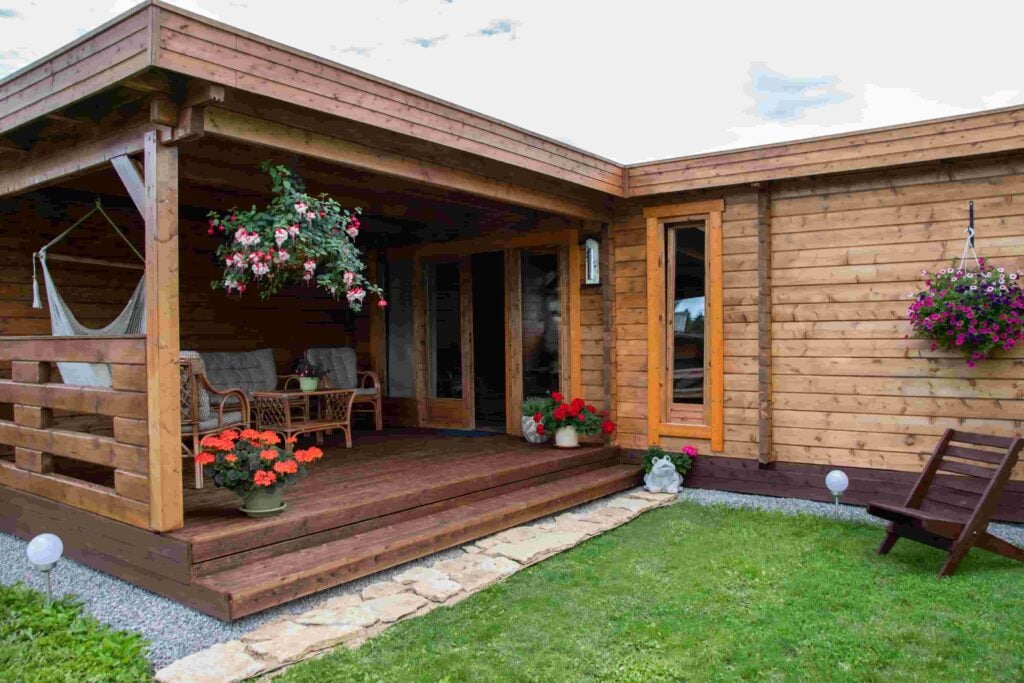
In the photo above: Hansa Deluxe summer house with a veranda
Does a summer house need to have ventilation and why?
Yes, a summer house needs ventilation. But to be clear – this can be as simple as opening doors or windows to let in the fresh air. For example, tilt and turn windows make it convenient to crack open a window. This is why all garden houses made by Summerhouse24 come equipped with them.
If you’ve ever set foot in a log cabin you may have noticed that the air feels fresh compared to buildings that are made from modern construction materials. And maybe you’ve heard somewhere that wooden buildings “breathe”?
This is true in a sense. Wood allows moisture to move through it, expanding and contracting in the process.¹ And, because of wood’s natural expansion and contraction as its moisture content changes, there are also many small gaps in all wooden buildings. These are a part of the design and ensure the wood has a little bit of space to move.
What are the signs of poor ventilation?
If you’re still concerned about poor ventilation there are a few signs you can look out for:
- Stuffy and stale air: When there isn’t enough new air coming in there’s less oxygen in the room and it will feel stuffy or stale.
- Odours that don’t go away: Odours should clear out fine on their own, but if they linger it is a sign of poor air circulation.
- Condensation on the inside of windows: Water and condensation on the inside of windows are not only unsightly but can also warp materials and cause paint to peel. It’s also the perfect environment for mould and mildew to grow.
- Mould and mildew: Mould can cause structural damages that can lead to costly repairs.
Condensation During Spring and Summer
If you do notice an increasing amount of condensation on the windows in spring or autumn, there’s no need to worry. During colder seasons this is to be expected since the air humidity is higher and it’s completely normal.
To get rid of excess moisture you can use any kind of heater – like a log-burning stove, radiator, or convection heater – to occasionally warm up the building. This drives out the humid air. Another option is to use a dehumidifier.
A word of advice if your summer house is located further away. Most materials – including wood, plaster, drywall and metal – will weaken or take damage from extended exposure to moisture. So don’t skip visiting your summer house during rainy periods because keeping your house free of excess moisture will save you from spending money on repairs later.
It’s also good to know that thinner wood is more likely to warp from moisture. This is one of the reasons why almost all of Summerhouse24’s garden summer house’s wall planks are made from wood that is at least 44mm thick.
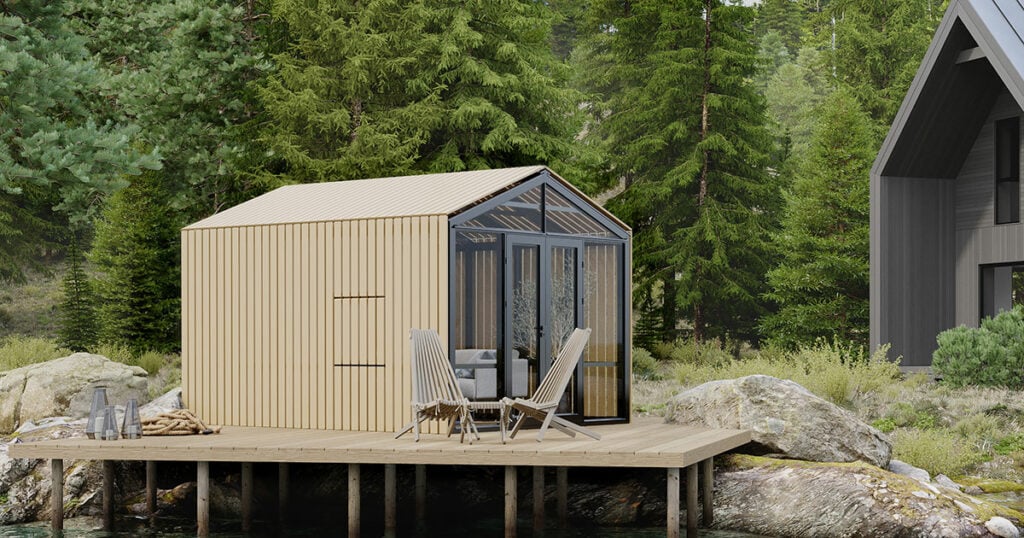
In the photo above: Garden House Isabella
What types of summerhouse ventilation can I use?
If you do want to add some extra ventilation to your summer house there are a few different options you can look at depending on the size of the summer house and how you plan to use it.
For example, if you’re looking to use your cosy garden sanctuary throughout the year you will probably also want to warm it up during the colder months. And, if you also want to cool it down during blistering hot summer days, an electric air conditioner with a heating function could be a great option. Another way to go about it is to use a heater and combine it with passive ventilation and a fan for those really hot days.
Natural Air Circulation or Passive Ventilation
The simplest type of ventilation uses natural air circulation and can be achieved by installing two vents – typically one at the front of the summer house and another one opposite to it, at the back of your garden room.
When the wind blows against the building the air gets forced in through the openings and a natural vacuum effect draws the air out. It’s often a good idea to also add screens to the vents to keep out bugs and rodents.
There are different types of natural ventilation options you can use, let’s take a look.
Gable Vents
Gable vents are a type of passive vent placed at the gable ends of a house. Warm air moves out through the vents and louvered slats keep out sun, debris and water.
You’ll find these vents in a wide choice of shapes, sizes and materials. Getting one that suits your garden room will be easy.
Wall Vents
Wall vents are another great choice. Combine them with other types of ventilation to get the best results for larger buildings. Mounting a vent on the lower side of a wall is a good idea. Cold air can then enter the building from near the ground and hot air can exit through the gable vents.
Make sure you choose the right vents according to the size of your summer house and other vents so that the input and output of the air are in balance.
Whirligig or Turbine Vent
Whirligig vents, also called whirlybirds or turbine vents, are powered by the wind. These cylindrical domes sit on the top of the roof and have special fins that make the dome spin. This creates a vacuum that draws out the air from inside. For maximum results combine turbine whirligigs with wall vents.
Properly maintained turbine vents can last for decades, making it an environmentally friendly and cost-effective solution. On the flip side, you’ll need to periodically clean the whirligig manually, as debris will sometimes get stuck between the fins.
Electric Air Conditioner
This might be the perfect choice for you if you’re looking for a solution that actively cools as well as heats your summer house depending on the season.
Not all air conditioning units come with both a heating and a cooling function though, so make sure you get the kind you are looking for!
There are three types of air conditioners you can get for your summer house:
- Wall split air conditioner: This is the most common type of AC and has two units – one inside and one outside. The outside unit has the condenser inside and it’s connected to the inside part by tubes that go through a small hole in the wall. A wall split air conditioner is the most efficient and quiet option out of the three but it is relatively costly to install.
- Condenserless air conditioner: The other wall-mounted option consists of a single unit that is installed on the inside of the building. It does have a condenser, but it’s located within the unit inside, which means it’s a great choice when it’s not possible to install a unit on the outside of the building.
- Portable air conditioner: Portable air conditioners have a large exhaust pipe that you can connect through a window or an opening in the wall. The upside with these conditioners is that they can easily be moved around and are relatively inexpensive. On the downside, they can be more noisy and might not be able to cool larger spaces efficiently, plus they take up valuable floor space.
Air conditioners need to be cleaned and disinfected periodically. It’s good to know that some people are more sensitive to air-conditioned air than others and it can impact their health and wellbeing. Another thing to consider is the high upfront cost and possible high bills later on. How to save energy in your summer house or log cabin is always an important consideration.
Conclusion
Wooden summer houses have great natural ventilation and usually don’t need additional vents. By opening doors and windows regularly you are already providing all the necessary air movement needed. It doesn’t hurt to add additional ventilation – if you notice any issues it’s important to take action – but it often isn’t required.
Sources:
University of California Agriculture and Natural Sciences – Understanding How Wood Dries
Categories:
Useful TipsWant to discuss over phone. Let us call back to you
If you need any additional info regarding any product, please fill in the below form and we will get back to you, usually the same or next working day.
Have any questions regarding some product?
If you need any additional info regarding any product, please send us your questions.
